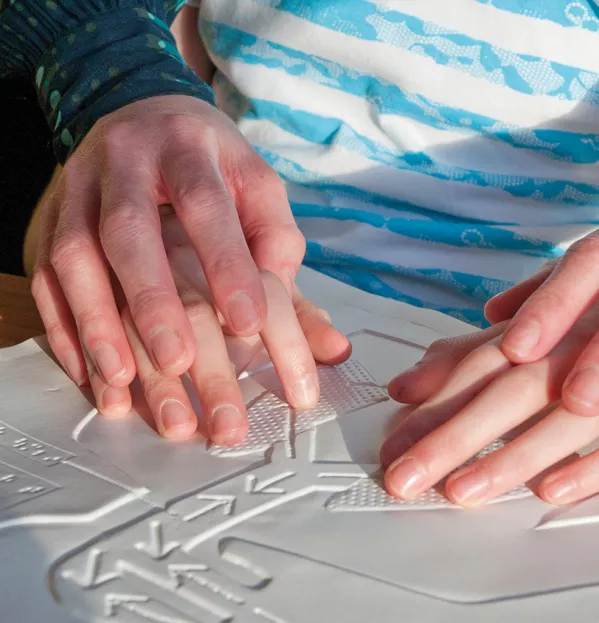Number of teachers of the blind ‘drastically dropping’

Too many specialist teachers for children with visual impairment are retiring and not being replaced, leaving children to flounder in school, Scotland’s leading sight-loss charity has warned.
The number of teachers qualified to work with children with visual impairment - known as QTVIs - is “dropping drastically”, said RNIB Scotland’s education and family services manager, Anne Marie Fleming.
She made her comments to TESS as the charity today launched its manifesto for the Scottish local authority elections in May. In it, RNIB Scotland warns that current shortages are set to be exacerbated due to the age profile of QTVIs.
A 2012 survey conducted by academics at the University of Edinburgh found that nearly 60 per cent of QTVIs were aged over 45.
The charity is calling for councils to invest in training to improve the ratio of QTVIs to schools and provide more incentives to complete QTVI training.
Parent complaints
Ms Fleming said: “A lot of QTVIs are retiring and not being replaced - the numbers are dropping drastically. Quite often I get parents contacting me saying they are not getting enough input from someone properly qualified to work with their child.
“I have to encourage local authorities to train more teachers but it’s a battle that is not easily won until we get more government support.”
A leading academic in the field has called for the General Teaching Council for Scotland (GTCS) to create a special category of registration for the teachers, to acknowledge their specialist skills.
The Scottish Sensory Centre at the University of Edinburgh is the country’s only provider of QTVI training. It takes about two years to gain the £7,000 master’s-level diploma that qualifies a teacher to work with children with a visual impairment. The cost of the programme was covered by councils but teachers studied for the qualification in their own time, according to Professor John Ravenscroft, director of the centre.
He said: “The teachers that come on this course are already practising qualified teachers. Some local authorities give them additional time; some don’t. It’s a pretty tough qualification and they deserve recognition for it, which is why I’m pushing for the GTCS to have a QTVI and a teacher of the deaf registration category.”
About 3,000 children and young people in Scotland have significant sight loss and most attend mainstream local authority schools. However, one-in-20 people of working age with sight loss leave school with no formal qualifications and they are more than twice as likely to have experienced restrictions to their learning.
Ms Fleming continued: “Education is a fundamental right for all children and young people. But it is acknowledged that children and young people with a visual impairment need extra support to access this right. They may require additional teaching in skills that are naturally acquired by their sighted peers, for example, in mobility, independent living and social interaction.
“Specialist teachers, accessible materials and raised awareness of the needs of pupils with a visual impairment: all go some way to levelling the playing field.”
‘Provide evidence’
John Stodter, general secretary of education directors’ association ADES, told TESS he was confident that the needs of children with a visual impairment were being met and called on the charity to provide evidence that the number of QTVIs was falling.
Mr Stodter said: “The issue is, are children’s needs being met? That’s the fundamental issue and it’s a serious issue. As far as I’m aware, that’s what is happening but if there’s a feeling that’s not the case, let’s see the evidence.”
Professor Ravenscroft has conducted research into the qualifications held by teachers of children with visual impairment on behalf of the Scottish government. The report was completed late last year and is due to be published soon, he said.
Numbers on the university’s course, meanwhile, had remained steady over the years, he said, with about 10-15 teachers training to become QTVIs each year.
You need a Tes subscription to read this article
Subscribe now to read this article and get other subscriber-only content:
- Unlimited access to all Tes magazine content
- Exclusive subscriber-only stories
- Award-winning email newsletters
Already a subscriber? Log in
You need a subscription to read this article
Subscribe now to read this article and get other subscriber-only content, including:
- Unlimited access to all Tes magazine content
- Exclusive subscriber-only stories
- Award-winning email newsletters